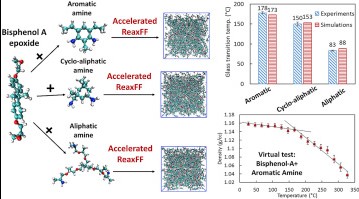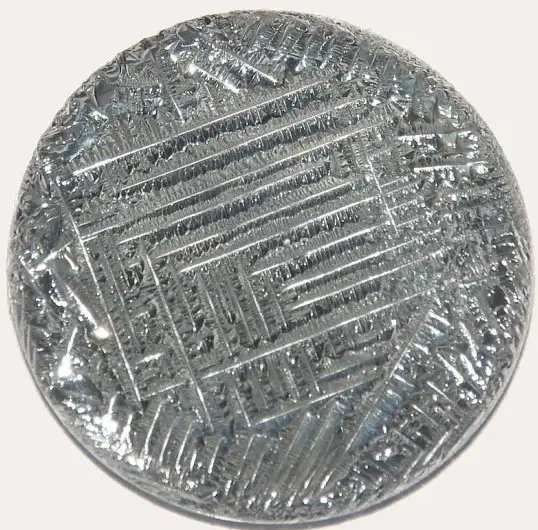Selenium and tellurium, two elements from the periodic table, belong to the same group but exhibit distinct physical and chemical properties that make them fascinating subjects of study. While both elements are less commonly discussed than their more famous counterparts like carbon or oxygen, they play crucial roles in various industrial applications and technological advancements. Their unique characteristics have spurred interest among scientists, engineers, and industries alike.
Selenium is a nonmetal that is essential for human health in trace amounts and is widely used in electronics, glassmaking, and as a dietary supplement. Tellurium, on the other hand, is a metalloid with significant applications in solar panel manufacturing, thermoelectric devices, and as an additive in metallurgy. The primary difference between selenium and tellurium lies in their physical states at room temperature, their occurrence in nature, and their utility in diverse technological fields.
Both elements share a place in the chalcogen group in the periodic table, leading to some similarities in their chemical behavior. However, their differing atomic structures confer unique properties and reactivities, making them suitable for specific applications. From enhancing the efficiency of solar cells to improving the durability of certain alloys, selenium and tellurium contribute significantly to modern technology and industry, albeit in ways that often remain unseen by the broader public.

Elemental Overview
Selenium Basics
Physical properties
Selenium is a nonmetal with properties that are both fascinating and essential for various applications. It exists in several allotropic forms, including red amorphous powder, black vitreous form, and gray metallic form, each with distinct physical properties. The gray form is the most stable and conducts electricity better in the light than in the dark, a characteristic vital for its use in photocells. Selenium’s melting point is relatively low at about 221 degrees Celsius, and it boils at 685 degrees Celsius.
Chemical behavior
Chemically, selenium is similar to sulfur, with which it shares its group in the periodic table. It is capable of forming compounds with metals (selenides), hydrogen (hydrogen selenide), and halogens. Selenium’s ability to photoconductivity – its conductivity increases in the presence of light – makes it invaluable in electronic applications. Its antioxidant properties, when combined with vitamin E, play a crucial role in protecting cells from damage.
Tellurium Fundamentals
Physical characteristics
Tellurium is a metalloid, meaning it possesses traits of both metals and nonmetals. It appears in a silvery-white form that looks metallic. Unlike selenium, tellurium is less abundant in the earth’s crust. Its physical properties include a brittle nature and a relatively high melting point of about 449.5 degrees Celsius, which speaks to its stability under heat.
Chemical properties
Tellurium’s chemical behavior is marked by its ability to form compounds with gold and silver, known as tellurides, and its reaction with other elements like hydrogen to form tellurium hydride (H2Te), a highly unpleasant smelling and toxic compound. It shares chemical similarities with selenium, such as forming dioxides when combined with oxygen, but its applications leverage its distinct properties, such as its thermal conductivity.
Historical Context
Discovery of Selenium
Origin and etymology
Selenium was discovered in 1817 by Jöns Jacob Berzelius, a Swedish chemist, during the analysis of tellurium contaminants in sulfuric acid. Its name is derived from the Greek word “selene”, meaning moon, highlighting its close relationship to tellurium, which is named after the Earth. The discovery underscored the element’s significance in chemistry and laid the groundwork for its future applications.
Unveiling Tellurium
Discovery and naming history
Tellurium was identified earlier than selenium, in 1782, by Franz-Joseph Müller von Reichenstein, but it was Martin Heinrich Klaproth who named it after “tellus”, the Latin word for earth, in 1798. Its discovery was crucial for mining, as tellurium was often found with gold and silver, hinting at the rich deposits of these precious metals.
Industrial Applications
Selenium Uses
Electronics and photocopies
Selenium’s photoconductivity makes it an excellent material for photocopiers, solar cells, and light meters. When light hits the selenium-coated drum in a photocopier, it becomes conductive and attracts toner particles, which are then transferred to paper.
Glass production
Adding selenium to glass can neutralize unwanted coloration from iron impurities or create beautiful red or pink shades, making it crucial for both practical and aesthetic applications in glassmaking.
Health and nutrition
As an essential micronutrient, selenium is vital for the human body, contributing to the prevention of cell damage and enhancing immune function. Its supplementation can be crucial in regions with selenium-deficient soils.
Tellurium Applications
Solar panels and thermoelectric devices
Tellurium is a key component in cadmium telluride solar panels, one of the most efficient types of photovoltaic cells available. It is also used in thermoelectric devices for power generation from waste heat.
Metallurgy and alloys
Adding tellurium to metals like stainless steel and copper improves their machinability and durability, making it invaluable in construction and manufacturing.
Research and development
The unique properties of tellurium fuel ongoing research into new applications, including next-generation memory storage devices and nano-materials.
Health and Environmental Impact
Selenium Significance
Biological Role and Dietary Importance
Selenium, an essential micronutrient, plays a pivotal role in human health. It is crucial for the antioxidant system, supporting immune function and thyroid health. Selenium is found in various foods, including fish, meats, and nuts, particularly Brazil nuts, which are among the richest sources.
Toxicity Levels and Exposure Risks
While selenium is beneficial in small amounts, excessive intake can lead to selenosis, a condition marked by symptoms such as hair loss, nail brittleness, and neurological abnormalities. The fine balance makes understanding selenium’s dietary importance and toxicity levels crucial.
Tellurium Concerns
Biological Effects and Uses
Tellurium, unlike selenium, is not essential for human health but has been studied for its potential antimicrobial and anticancer properties. Most exposure to tellurium comes from industrial contact or the consumption of plants growing in tellurium-rich soil.
Environmental Presence and Toxicity
Environmental exposure to tellurium primarily concerns industrial emissions and its use in manufacturing. Although not as toxic as selenium, tellurium compounds can be harmful to aquatic life, necessitating careful management of tellurium waste.
Extraction and Refinement
Mining Selenium
Sources and Extraction Methods
Selenium is primarily extracted from anode slimes during the electrolytic refining of copper. This process involves several steps, including:
- Roasting with soda or sulfur to remove impurities
- Leaching the roasted product to dissolve selenium
- Electrowinning to recover selenium from the solution
Refinement Processes
The refined selenium is then purified further, often by distillation, to produce the high-purity selenium used in electronics and dietary supplements.
Harvesting Tellurium
Geological Sources
Tellurium is much rarer than selenium in the Earth’s crust and is mainly found in conjunction with gold, silver, and copper ores. Its rarity makes the efficient extraction and refinement processes vital.
Extraction and Purification Techniques
The extraction of tellurium involves a complex process, including:
- Roasting ore to release tellurium gas
- Condensing the gas into elemental tellurium
- Purifying the elemental tellurium through processes like electrolysis
Market Dynamics
Selenium Demand and Supply
Global Market Trends
The demand for selenium has grown, particularly in the electronics and health supplement industries. Supply fluctuates based on copper mining output, as selenium is a byproduct of copper ore processing.
Price Fluctuations and Factors
Selenium prices can vary significantly due to changes in demand, mining output, and technological advancements that affect its extraction and application.
Tellurium Economics
Supply Chain Insights
Tellurium’s supply chain is tightly linked to the production of copper and other base metals. Its rarity and specific uses in high-tech applications make its market highly sensitive to changes in demand and supply.
Market Drivers and Challenges
Key drivers include the growth in renewable energy technologies and thermoelectric devices. Challenges stem from its scarcity and the environmental impact of mining activities.
Technological Innovations
Advancements in Selenium
Recent Developments and Future Prospects
Innovations in selenium applications include its use in next-generation solar cells and as a potential anticancer agent. Researchers are exploring its versatility in electronics and biotechnology.
Tellurium Breakthroughs
Cutting-edge Research and Applications
Tellurium’s potential in phase-change memory and nano-technology is being explored, offering promising avenues for future technological advancements.
Comparative Analysis
Similarities Between Selenium and Tellurium
Both elements share a group on the periodic table, leading to similarities in chemical reactivity and compounds they form. Their use in technology and potential health applications highlights their importance.
Distinct Features
Key Differences in Physical and Chemical Properties
Selenium is more widely used in industry due to its photoelectric properties, while tellurium’s rarity and unique physical properties confine its use to niche applications.
Diverse Applications and Implications
The applications of selenium in health and electronics contrast with tellurium’s use in renewable energy and metallurgy, reflecting their distinct properties.
Future Perspectives
Selenium Outlook
Emerging Uses and Market Predictions
The future of selenium looks promising, with potential growth in medical applications and renewable energy. Innovations could lead to increased demand and new uses for this versatile element.
Tellurium Prospects
Future Technologies and Industry Impact
Tellurium’s role in sustainable technology and electronics is expected to expand, driven by advancements in solar energy and materials science. Its limited availability may encourage the development of recycling methods to meet future demand.
Frequently Asked Questions
What are selenium and tellurium used for?
Selenium is predominantly used in the electronics industry for photocopier drums and as a dietary supplement due to its antioxidant properties. It also finds applications in glassmaking to decolorize glass and to make it red or pink. Tellurium’s uses are in the creation of high-efficiency solar panels, thermoelectric devices for power generation, and as an additive in steel and copper to improve machinability.
Why are selenium and tellurium important?
Selenium and tellurium are important due to their unique properties and roles in various applications. Selenium’s antioxidant properties make it vital for human health, while its electrical conductivity properties are essential for electronic devices. Tellurium enhances the efficiency of solar cells and contributes to sustainable energy solutions, making it crucial for advancing renewable energy technologies.
Can selenium and tellurium be toxic?
Yes, both selenium and tellurium can be toxic in large amounts. Selenium is essential in trace amounts but can lead to selenosis if consumed excessively, characterized by symptoms like gastrointestinal distress, hair loss, and neurological damage. Tellurium exposure can cause tellurium breath, which has a garlic-like odor, and long-term exposure can lead to neurological and skin problems.
How are selenium and tellurium extracted?
Selenium is typically extracted from the residues of copper refining or as a byproduct of sulfuric acid production. The extraction process involves roasting with soda or sulfuric acid, followed by purification. Tellurium is extracted from the anode muds of copper refining, where it is found in small quantities. The extraction involves complex processes including roasting, leaching, and electrolysis to obtain pure tellurium.
Conclusion
The intriguing elements selenium and tellurium play indispensable roles in our modern world, from enhancing human health and nutrition to pushing the boundaries of technology and sustainability. Their unique properties have enabled innovations in electronics, renewable energy, and material science, underscoring the importance of these often-overlooked elements in the periodic table.
Understanding the differences and applications of selenium and tellurium offers insight into how elements can influence various domains of life and industry. As we continue to explore the potential of every element on the periodic table, selenium and tellurium stand as examples of how science and technology can harness the natural world for the benefit of humanity and the planet.

